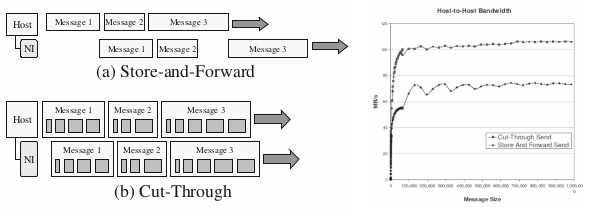GRIM Adding Peripheral Devices
This paper I wrote for the first Myrinet User Group meeting provides an example of how GRIM interacts with an I2O peripheral device. It also goes into the details of how the NI uses some cut-through optimizations to boost the bandwidth for sends in the system.

Abstract
Resource rich clusters are an emerging category of clusters of workstations where cluster nodes comprise of modern CPUs as well as high-performance peripheral devices such as intelligent I/O interfaces, active disks, and capture devices that directly access the network. These clusters target specific applications such as digital libraries, web servers, and multimedia kiosks. We argue that such clusters benefit from a re-examination of the design of the message layer to retain high performance communication while facilitating the interface to endpoints for a variety of devices.
This paper describes a message layer design which includes optimistic flow control, the use of logical channels, a push-style cut-through injection optimization, and an API supporting cluster-wide active message handler management. The goal is to support a number of diverse cluster hardware configurations where communication endpoints exist in a variety of locations within a node. The current implementation has been tested on a Myrinet cluster with communication endpoints located in the host CPUs as well as Intel i960 based I2O server cards.
Publications
- MUG Paper Craig Ulmer and Sudhakar Yalamanchil, "A Messaging Layer for Heterogeneous Endpoints in Resource-Rich Clusters", Myrinet User Group.